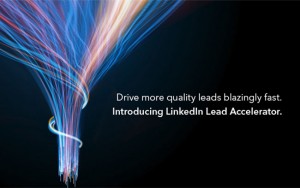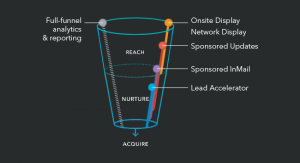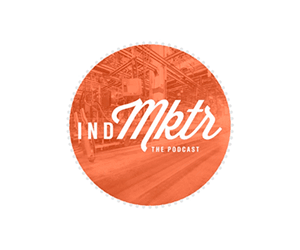If you are a B2B company or work in B2B marketing, you know how important a focus on lead generation is to any marketing plan. Other industries have the luxury of emphasizing “vanity metrics” such as how many fans they have or if their website traffic went up, but all B2Bs know that if those metrics don’t relate to how many quality leads were generated, then it’s all for naught.
Luckily, LinkedIn knows this, too, and has been working hard to make your life a little easier by taking strides to bridge the gap between the “social universe” and the B2B business world for years. In February, they took another big step forward by introducing their LinkedIn Lead Accelerator and the new LinkedIn Network Display.
Russell Glass, LinkedIn Marketing Solutions’ head of products wrote a great introduction to LinkedIn Lead Accelerator, but I wanted to highlight some of the most exciting aspects of the tool for you today.
A Little Background: LinkedIn’s Acquisition of Lead Generation Tool Bizo
LinkedIn’s latest developments come on the heels of its acquisition of Bizo in 2014. Last year, when this deal was first announced, David Thacker (VP of Product at LinkedIn) said, “It’s our goal to integrate Bizo’s offerings into our content marketing products to become a more powerful tool for brands that want to build stronger relationships with professionals.”
LinkedIn focused on Bizo’s Multi-Channel Nurturing tool and their experience in lead generation and nurturing. Bizo had the ability to target anonymous and known contacts and dynamically display different content marketing pieces and display ads to them depending on their date of interaction and/or the actions they took on a designated website. This integrated tool appealed directly to the LinkedIn team and supported their vision for how they wanted to expand their marketing abilities and offerings in 2015.
LinkedIn Lead Accelerator’s Lead Generation Full-Funnel Focus
Full-funnel attribution is the white whale of the online marketing analytics game and LinkedIn is hoping to get closer to a solution with their new releases.
In his introductory piece, Glass states:
Prior to today, products like Sponsored Updates or LinkedIn Display Advertising were used to achieve individual marketing objectives. Now, with the full-funnel approach, marketers can use all of our marketing solutions products together as a portfolio to create a customized experience that enhances the marketer-prospect relationship and delivers results.
This “customized experience” includes things such as content targeting through display and social ads, sequential ads, and content based on prospect identities or actions, A/B testing, and more. The hope is to create a pathway that is efficient for customers and track-able for B2B marketers.
Imagine the following: Cookied contacts (both anonymous and known) are tagged on your website and, depending on which page they expressed an interest in, entered into your marketing funnel. Next, they are shown a specific display ad or piece of sponsored content through social channels or one of the 2,500 publisher sites now in the LinkedIn display network (see below).
Your prospect doesn’t engage right away, because this is real life and not a romantic comedy, so the next week, they are shown a different ad that is designed to make a harder sell. Once your prospect engages with that ad, they are put into a track that continues to nurture their interest with specifically sequenced ads, emails, and content. In other words, they get a mid-funnel marketing experience that engages them with content that has been custom tailored to their expressed interests.
Finally, since your funnels were set up using an integrated set of lead generation tools, you have reporting metrics for all the actions each customer took and can assess which paths did and didn’t produce significant ROI.
LinkedIn Network Display’s On- and Off-Network Display Ads
As mentioned above, LinkedIn also announced a new display network called LinkedIn Network Display. Similar to Google’s Display Network or other partner networks, LinkedIn’s network allows companies to place ads on LinkedIn and/or up to 2,500 affiliated publisher sites.
“That sounds a lot like what Facebook and Twitter are doing,” you are probably saying to your computer screen right now. You are correct, although in the case of LinkedIn, their display network only focuses, as they put it, on “the professional world . . . [and] that professional context makes a big difference.”
Think about it: The buyers who are looking for your industrial products or services probably aren’t in the right mindset to think about your offerings while buying shoes or looking for anniversary gifts. But if your ad were to target them while they were on an industry publication website or a materials-sourcing site they use while at work, you would be much more likely to catch their attention at the right time to convert and not waste your advertising dollar. That’s what LinkedIn is trying to achieve with their display network.
Conclusion
Like their other marketing offerings, LinkedIn Lead Accelerator and Network Display advertising will be sold through the LinkedIn sales associate team and will be available via annual or quarterly subscriptions. LinkedIn is keeping costs pretty quiet right now in the hopes of getting people to talk to them before revealing any pricing.
Regardless of the cost, these new releases should be on your radar if you are involved in B2B marketing. LinkedIn’s focus on the “professional” markets and their current standing as the preferred online network for business referrals, cultivating prospects, and enhancing client relationships (see the report from BI Intelligence), makes their new initiatives great bets for enhancing your online lead generation techniques.
If you’re not sure where or how to get started with LinkedIn, or want someone to help you design an integrated online lead generation plan, please contact ISM today and we can put you on the right path to find the perfect way to accelerate your lead generation efforts.






